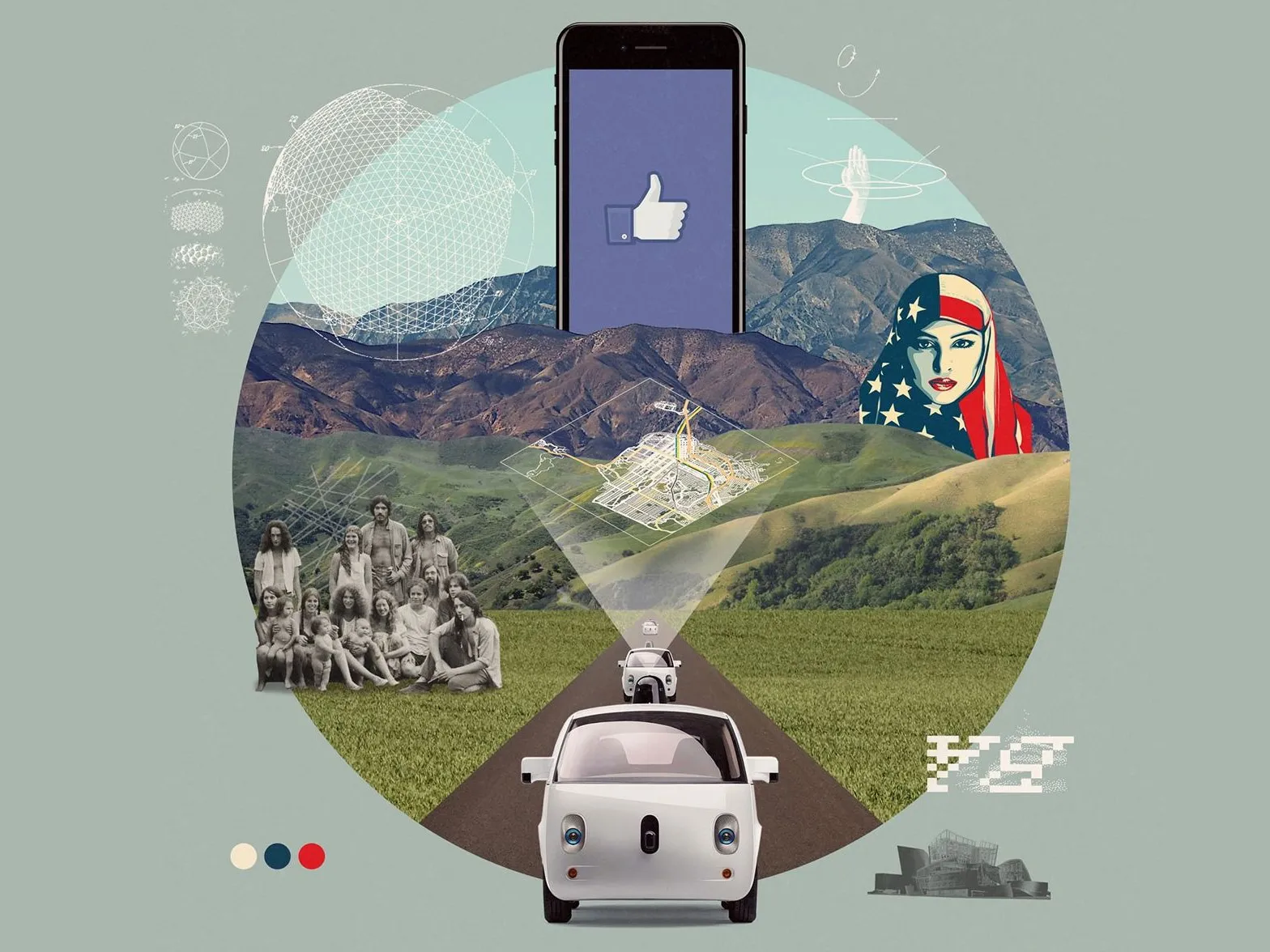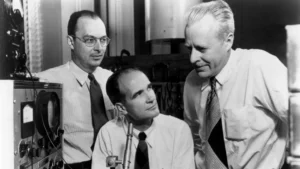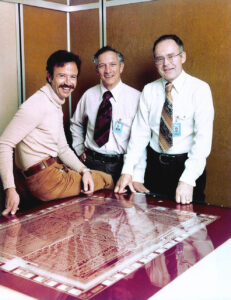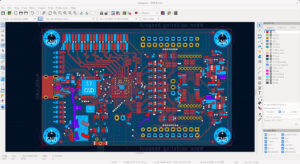Introduction:
Silicon Valley, situated in Northern California and encompassing the southern region of the San Francisco Bay Area, is a renowned global hub for high technology and innovation.
It is synonymous with the geographical expanse of the Santa Clara Valley. The term “Silicon Valley” denotes the specific area in Northern California where high-tech industries have flourished, and it is commonly used as a broader reference to the state’s thriving high-tech business sector.
A unique combination of historical foundations, access to capital, a culture of innovation, a diverse talent pool, and a supportive ecosystem has attributed to Silicon Valley’s success.

How Did Silicon Valley Become the Epicenter of Tech Revolution
Silicon Valley emerged as a result of the convergence of various factors, including a well-established scientific research base within local universities, abundant venture capital, permissive government regulations, and consistent funding from the U.S. Department of Defense.
The leadership of Stanford University played a crucial role in the early stages of the valley’s development. These components collectively laid the foundation for its growth and success.
The United States provided a favorable environment for business investment, distinguished by significantly lower taxes on capital gains since the Revenue Act of 1921 and a relatively lax regulatory framework for new businesses.
The establishment of the Small Business Administration in 1953 further encouraged startups, offering support to aspiring entrepreneurs. Northern California, particularly along Sand Hill Road in Menlo Park and Palo Alto, became a focal point for venture capitalists actively seeking innovative high-tech business concepts.
California’s civil code, in contrast to other states, weakened the typical non-compete clauses that bound employees to their companies, allowing workers in the region to freely apply the knowledge acquired from previous employers.
This competitive advantage positioned Silicon Valley ahead of other American tech hubs, such as Massachusetts’ Route 128 encircling Boston.
Read More: History of VLSI: Transistor to System-on-a-Chip
The Early Years of Silicon Valley: From Orchards to Audion Tubes
In the late 19th century, the Santa Clara Valley was renowned for its fruit orchards, producing cherries, pears, apricots, and plums.
The region’s tranquil atmosphere changed when Leland Stanford founded Stanford University in 1891, which laid the groundwork for future technological advancements.
One of the significant milestones was when university president David Starr Jordan invested in the audion tube developed by Lee de Forest in 1909. This vacuum tube revolutionized electrical products and set the stage for what was to come.
Another key figure in Silicon Valley’s early development was Frederick Terman, a prominent figure at Stanford.
He played a pivotal role in encouraging graduates to stay in the area, turning Stanford’s electrical engineering department into a world-class research facility. Terman invested heavily in businesses that would base themselves in the valley and employ talented young people.
One such business was Hewlett-Packard, an electrical company started in a garage by Stanford alumni William Hewlett and David Packard.

The HP Garage, affectionately known as the “Birthplace of Silicon Valley,” is where Bill Hewlett and David Packard, the founders of Hewlett-Packard, initiated the development of their audio oscillator in 1938.
Here’s How the Hippie Movement Influenced Silicon Valley:
The hippie movement of the 1960s and 1970s had a significant impact on shaping the culture and values of Silicon Valley.
While the relationship between the counterculture movement and the tech industry might seem surprising at first, it played a crucial role in shaping the innovative and entrepreneurial spirit that became characteristic of the region.
1. Anti-Establishment Values:
The hippie movement was known for its rejection of traditional societal norms and the establishment.
This anti-establishment sentiment fostered a culture of questioning authority and challenging the status quo. In Silicon Valley, this translated into a willingness to challenge existing industries and develop disruptive technologies that would change the world.
2. Embrace of Creativity and Individuality:
Hippies celebrated creativity, individuality, and self-expression.
This emphasis on personal freedom and authenticity resonated with the entrepreneurial culture in Silicon Valley. Start-up founders and innovators were encouraged to think outside the box, take risks, and pursue their passions.
Follow us on Linkedin for all major updates
3. Communal Living and Collaboration:
The hippie movement promoted communal living and cooperative efforts.Tech entrepreneurs and professionals in Silicon Valley reflected the spirit of collaboration through their open and sharing culture.
Companies often exchanged ideas, collaborated on projects, and supported each other’s endeavors.

4. Emphasis on Environmental Sustainability:
The hippie movement highlighted the importance of environmental sustainability and ecological consciousness.
This emphasis on green living influenced tech companies in the region to adopt environmentally-friendly practices and pursue sustainable technologies.
This ethos inspired self-taught engineeIn the tech community, this ethos inspired self-taught engineers and programmers to thrive, and it fueled the entrepreneurial drive of many successful individuals who were motivated by a passion to learn new skills and create things themselves.s.
5. Influence on Early Tech Innovators:
Some of the early tech pioneers in Silicon Valley were influenced by the hippie movement.
For example, Steve Jobs, co-founder of Apple, spent time in an Oregon commune before co-founding the company. The counterculture experience influenced his emphasis on design, aesthetics, and user experience in Apple’s products.
6. Access to New Ideas and Perspectives:
The diverse and intellectually vibrant atmosphere of the counterculture movement exposed many individuals in Silicon Valley to new ideas and perspectives.
This openness to alternative thinking contributed to the region’s reputation for fostering innovation and creativity.
While the hippie movement did not directly create Silicon Valley, its values, culture, and influence on some of the key figures in the tech industry helped shape the region’s unique character.
The willingness to challenge conventions, the celebration of creativity, the spirit of collaboration, and the pursuit of meaningful and purpose-driven work have all become defining features of Silicon Valley’s innovative and entrepreneurial ecosystem.
The Arrival of Shockley Semiconductor and the Birth of Silicon Valley
The real transformation of the region into Silicon Valley began with the establishment of the Stanford Industrial Park in 1951.
This collaboration between Stanford University and the City of Palo Alto provided 660 acres dedicated to research labs, offices, and manufacturing facilities, laying the groundwork for the valley’s future as a tech hub.

A commemorative plaque marks the historical significance of Shockley Semiconductor Laboratory as the inaugural high-tech company in the area that would eventually evolve into Silicon Valley.
While working on transistors, Shockley conceived the idea of a four-layer diode that could lock into the “on” or “off” state without the need for further control inputs.
This innovation could significantly reduce complexity in large switching networks compared to circuits requiring multiple transistors.
Birth
Moreover, Shockley believed this new device would be as crucial as the transistor and kept the project a secret within the company.
His behavior became increasingly paranoid, leading to incidents like ordering lie detector tests on employees after suspecting a conspiracy involving a cut finger of a secretary.
He also had a fluctuating management approach, sometimes prioritizing immediate transistor production while downplaying the Shockley diode project to perfect the production system. This caused discontent among employees, resulting in small rebellions.
A group of young employees, known as the “Traitorous Eight” – Julius Blank, Victor Grinich, Jean Hoerni, Eugene Kleiner, Jay Last, Gordon Moore, Robert Noyce, and Sheldon Roberts – grew frustrated with Shockley’s management style and went over his head to Arnold Beckman, demanding Shockley’s replacement.
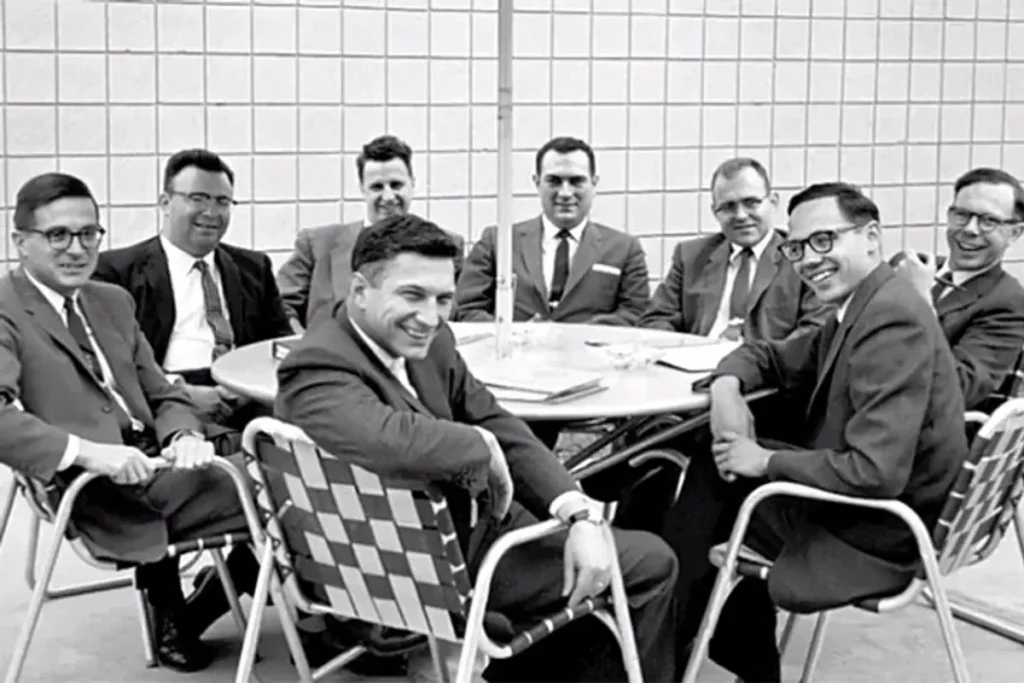
“Traitorous eight”
Despite initial agreement, Beckman eventually sided with Shockley, prompting the group to seek support from Fairchild Camera and Instrument, a company with military contracts. They started Fairchild Semiconductor in 1957 with the aim of manufacturing silicon transistors. Shockley referred to them as the “traitorous eight” and dismissed their chances of success.
The “traitorous eight” later left Fairchild and established their own companies.
Over two decades, 65 different companies were founded by first or second-generation teams that traced their origins back to Shockley Semiconductor in Silicon Valley.
In 2014, reports indicated that 92 public companies out of 130 descendants collectively held a valuation of over $2.1 trillion, and more than 2,000 companies could trace their origins back to the original eight co-founders of Fairchild.

Since its establishment in 1931, Moffett Field in Sunnyvale/Mountain View has been a pivotal player in the evolution of Silicon Valley. Initially focused on researching and developing crucial technologies for the U.S. military, it later transitioned its efforts to NASA. Presently, Moffett Field is home to the Ames Research Center.
Silicon Valley Takes Flight: The Space Race and US Tech Industry Rise
Furthermore, in response to the Soviet Union’s early lead in the space race with the launch of the Sputnik satellite, President Eisenhower created NASA and DARPA to develop new technologies, providing almost unlimited funding to deserving companies.
Moreover Silicon Valley, with its concentration of tech companies, jumped at the chance, becoming the center for the development of the US ballistic missile program and technology used in military satellites, tracking systems, and microelectronics for advanced weapons systems.
Companies like Fairchild Semiconductor leveraged these military contracts to grow and transform into tech giants.
Additionally In 1965, the Stanford Industrial Park housed 40 companies and employed over 11,400 people, with NASA sourcing approximately 60% of its integrated circuits from the region.
Read More: How Japan Beat the US in the First Chip War
Silicon Valley’s Boom and Bust Years: From Dot-Com Bubble to Modern Innovations
The 1970s and 1980s saw the emergence of IT giants like Apple and Microsoft, along with the founding of major venture capital firms like Kleiner Perkins and Sequoia Capital.
The 1990s brought the dot-com era, marked by rapid growth and exuberant investment in internet-based companies.
However, the dot-com bubble burst in 2000, wiping out billions of dollars in market value. Despite this setback, Silicon Valley continued to produce technologies that shaped the modern internet, and many successful companies emerged from the aftermath.
The Present and Future of Silicon Valley: Challenges and Opportunities
Today, Silicon Valley faces challenges such as a growing wealth gap, housing affordability concerns, and decreased trust in tech firms due to issues related to privacy, misinformation, and market dominance.
The COVID-19 pandemic and inflation have impacted investment and employment, with many IT professionals moving away from the Santa Clara Valley due to high living costs.
Moreover, the rise of generative AI software, including OpenAI’s ChatGPT, has sparked debates about its potential misuse, the spread of fake content, and concerns about job displacement.
These issues have added to the growing distrust in Big Tech firms and reintroduced the concept of Silicon Valley as a “Death Valley.”
A Legacy of Innovation and Resilience: The Future of Silicon Valley
Despite the challenges, analysts believe that Silicon Valley’s culture of entrepreneurism and innovation will endure. While the valley may be at the end of a boom cycle, it certainly is not completely bust.
The region’s strong spirit of creativity and ingenuity, along with its concentration of talent and resources, suggest that Silicon Valley will continue to be a center of innovation in the technology world.
Read More: Steve Jobs: The Man Who Changed Semiconductors Without Even Trying
Conclusion:
As we remember the contributions of Gordon Moore and reflect on the journey of Silicon Valley, we recognize the legacy of innovation and resilience that has shaped this high-tech hotspot.
While it may face challenges, Silicon Valley’s spirit of creativity and ingenuity continues to drive it forward, ensuring its continued prominence in the global technology landscape.
The future holds both uncertainties and opportunities, but Silicon Valley’s remarkable history suggests that it will adapt and thrive, making further contributions to the digital age and beyond.

